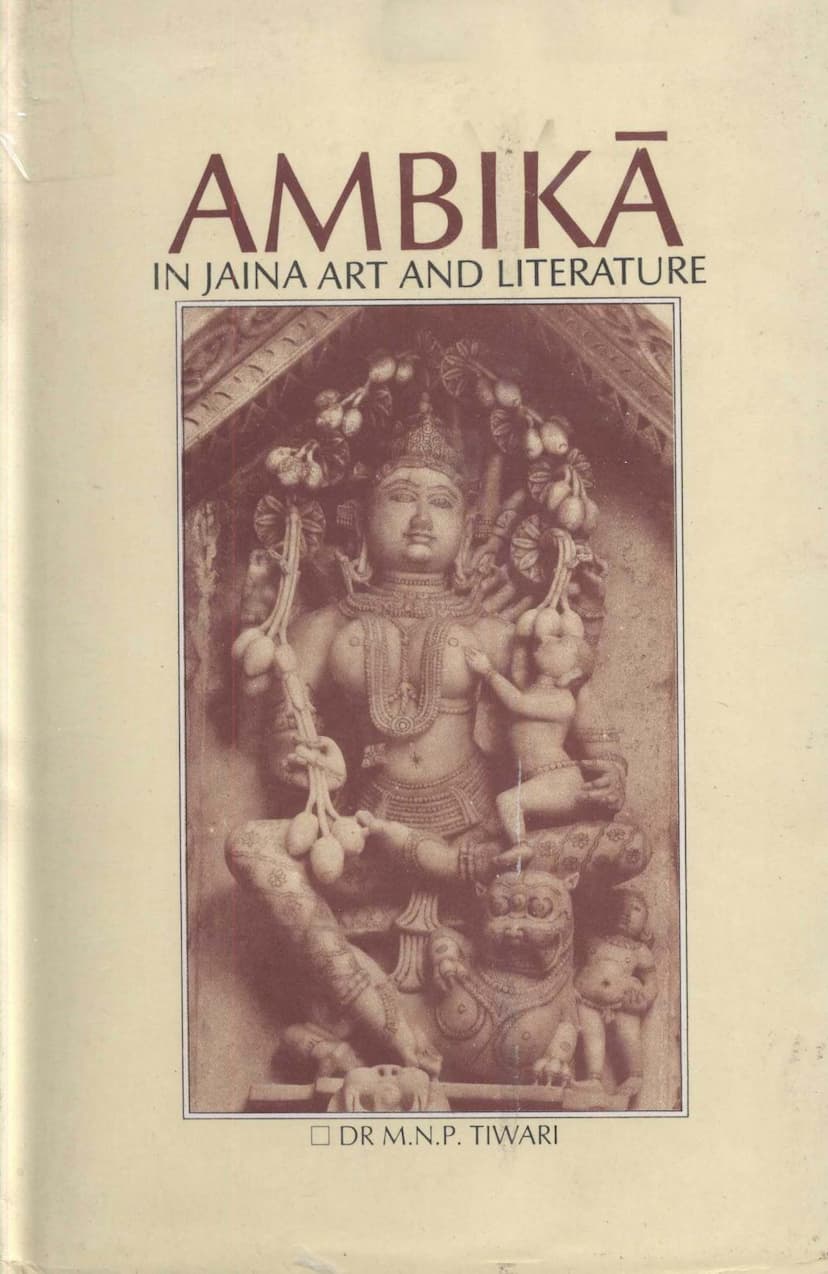Ambika On Jaina Art And Literature
Added to library: September 1, 2025

Summary
Here's a comprehensive summary of the Jain text "Ambika on Jaina Art and Literature" by Maruti Nandan Prasad Tiwari, based on the provided pages:
Book Overview:
"Ambika in Jaina Art and Literature" by Dr. Maruti Nandan Prasad Tiwari, published by Bharatiya Jnanpith in 1989, provides a detailed and critical assessment of the origin and development of the Jaina Yakshi (female attendant deity) Ambika. The book traces her evolution through Jaina literature, iconographic texts, sculpture, and painting, drawing on extensive research from significant Jaina art sites across India.
Key Themes and Findings:
-
Origin and Evolution: The study highlights that Ambika, recognized as the Yakshi of the 22nd Jina, Aristanemi (or Neminatha), holds an exalted position in Jaina worship. Her origins are traced to the popular worship of the 'Mother' and fertility cults, likely adopted by Jainism in the form of an earlier Yakshi named Bahu-putrika. By the late 6th century AD, she transformed into Ambika.
-
Assimilation and Syncretism: The book emphasizes that Ambika's iconography and concept are a clear example of Jainism assimilating popular beliefs and deities from other traditions. While she is often seen as a Jaina adaptation of the Hindu goddess Ambika or Durga due to her lion mount and sometimes similar attributes, the text argues that her core Jaina concept is rooted in the ancient worship of the Mother Goddess and the fertility cult. The absorption of Tantric influences in later periods further enriched her iconography, leading to the adoption of attributes suggesting power and destructive capabilities, mirroring aspects of Brahmanical goddesses like Durga.
-
Iconographic Development:
- Early Phase (c. 6th-8th Century AD): Ambika initially appeared as a two-armed deity. Early representations, found in sites like Akota, show her with an amra-lumbi (bunch of mangoes) and a child. Her association with Neminatha was not exclusive, as she is also depicted with other Jinas like Rsabhanatha and Parsvanatha during this period.
- Later Phase (c. 9th-16th Century AD): Ambika's popularity grew, and her iconographic forms diversified. She continued to be depicted as two-armed, but four-armed and occasionally multi-armed representations became more common, particularly in Tantric contexts. The amra-lumbi and the child remained consistent attributes, along with her lion mount. In many later images, the branches of a mango tree above her head, sometimes with the figure of Neminatha, became an invariable feature. She also began to be depicted with additional attributes like a goad, noose, mirror, and even a sword and disc, reflecting her growing importance and the influence of Shakti cults.
-
Regional Variations: The book details Ambika's representation across various regions:
- Western India (Gujarat, Rajasthan): These regions, strongholds of Jainism, show prolific representations of Ambika. The Akota bronzes are significant for early examples. Sites like Delvada (Mt. Abu) and Kumbharia are noted for their intricate depictions.
- Maharashtra: Maharashtra, particularly Ellora, also features significant representations of Ambika, often attributed to the Rastrakuta period.
- Uttar Pradesh and Madhya Pradesh: Deogarh and Khajuraho are highlighted as crucial centers for Jaina art, yielding numerous depictions of Ambika, showcasing her as a cult deity with her entourage.
- Bihar and Bengal: These regions show fewer representations, with Ambika consistently depicted as two-armed and adhering to traditional features.
- Orissa: Ambika was very popular in Orissa, with numerous two-armed and some four-armed figures found, venerated as an independent goddess.
- South India: While Ambika's presence began early, she did not attain the same prominence as other Yakshis. Two-armed representations were dominant, with fewer instances of amra-lumbi, and both sons often depicted on her left.
-
The Parivara (Entourage) of Ambika: The study notes the development of Ambika's "family" or entourage after the 10th century AD, particularly in images from Khajuraho and Deogarh, where she is shown with other goddesses, attendants, and even the Nava-grahas, suggesting her elevated status as a cult goddess.
-
Legends of Ambika: The book includes legendary accounts of Ambika's previous births, such as the story of Agnila, which explain some of her iconographic features, like her association with mangoes and her sons, Siddha and Buddha (or Subhankara and Prabhankara in some traditions).
-
Ambika in Painting: Ambika also appears in paintings from around the 12th century AD onwards, often reflecting the stylistic and iconographic features found in the sculptures of western India.
Significance of the Book:
The book is a significant contribution to the study of Jaina art and iconography. It meticulously traces the evolution of a major Jaina Yakshi, demonstrating the interplay of religious tradition, popular beliefs, and artistic development. The detailed analysis of archaeological evidence and textual references makes it an invaluable resource for students and scholars of Indian art history, religious studies, and Jainology. The appendices, illustrations, and extensive bibliography further enhance its utility.